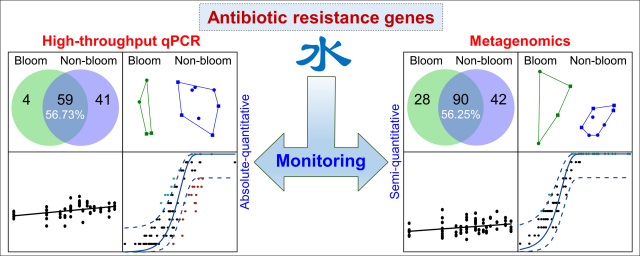

Bacterial antibiotic resistance genes (ARGs), a kind of emerging environmental pollutants, greatly threat human health through pathogenic bacteria. High-throughput quantitative PCR (HT-qPCR) and metagenomic approaches are two popular tools applied in aquatic environmental ARGs monitoring. However, current poor knowledge of different ARG profiling approaches' impacts on the understanding of the ARGs in aquatic environments greatly limit the further field application of these two approaches. For filling such knowledge gap, this study simultaneously employed these two approaches to examine and compare the ARGs in a freshwater reservoir across space and time. We found metagenomic approach detected more ARG subtypes and much higher bacitracin resistance genes' abundances than HT-qPCR. In general, HT-qPCR and metagenomics analyses both revealed similar ARG dynamic patterns and co-occurrence patterns between ARGs and bacterial taxa as well as the relationships between ARGs and environmental factors. Our results indicated the impacts of different ARG profiling approaches on the understanding of bacterial ARGs might be minor or negligible. HT-qPCR approach has the superiorities of time-saving, absolute quantification, low requirement for bioinformatics skills but also has some drawbacks including higher PCR amplification & primer bias, higher primer dependency and relative lower ARG subtype quantification capability compared to metagenomic approach. We suggest HT-qPCR approach can be employed for routine aquatic environmental monitoring, and metagenomic approach could be applied in comprehensive surveys for getting more ARG subtype information. Our data can be a useful reference for choosing right ARG profiling approaches for bacterial ARGs monitoring and risk assessment in aquatic environments.
